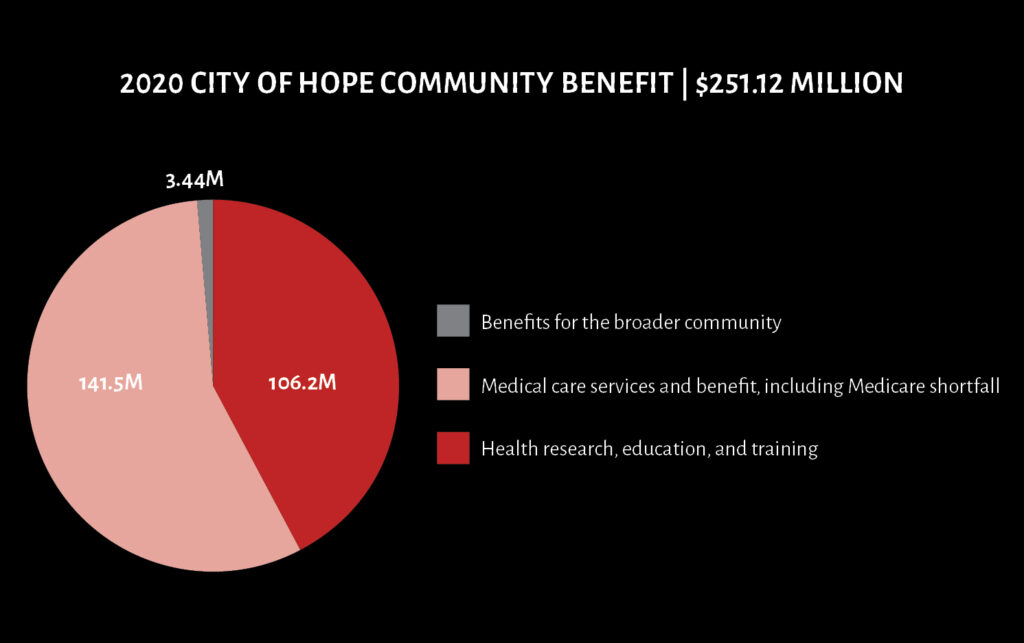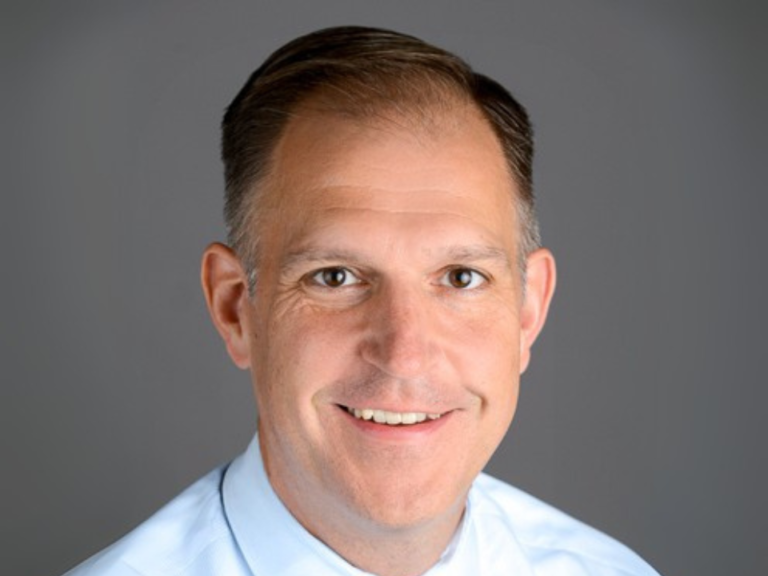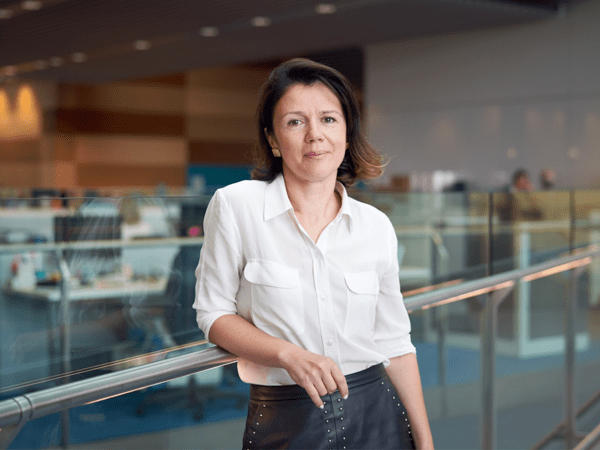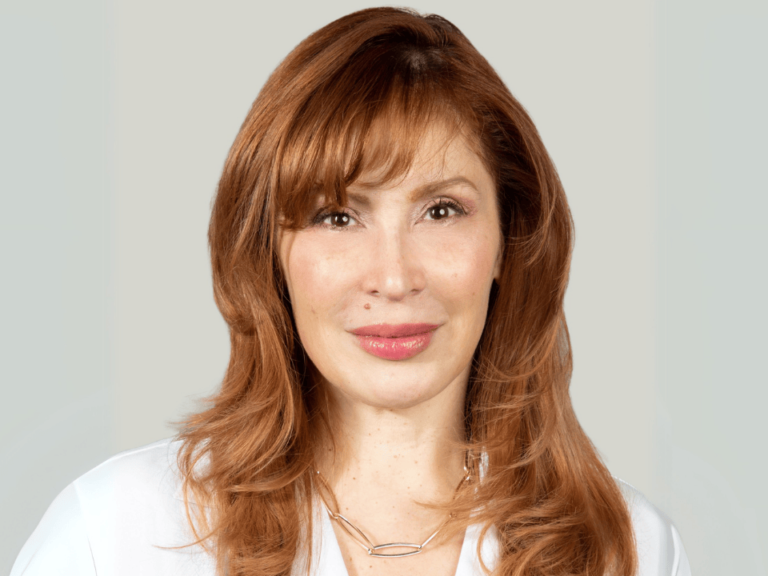In this series, The Cancer Letter invites conversations about diversity, equity, and inclusion in recruitment and mentorship at academic cancer centers.
The objective is to help disseminate best practices employed to diversify the oncology workforce of the future.
If you’d like to take part, reach out to Matthew Ong (matthew@cancerletter.com), associate editor of The Cancer Letter.
As a comprehensive cancer center in Los Angeles, City of Hope serves one of the most diverse—and vulnerable—patient populations in the United States.
Located in Duarte, approximately half an hour northeast of downtown Los Angeles, City of Hope serves more than 90,000 patients each year, many of whom are residents in underserved communities that surround the city.
In many communities immediately east and south of Duarte, 25% or more of residents lack a high school education, and 30% or more of residents live in poverty.


“Despite remarkable advances in cancer treatments and cures, many patients lack access to specialty care, which is even more pronounced among vulnerable and disadvantaged communities,” Angela Talton, senior vice president and chief diversity, equity, and inclusion officer at City of Hope, said to The Cancer Letter.
Talton was recruited to City of Hope on Jan. 11 as the cancer center’s inaugural chief DEI officer.
The hospital’s primary service area, which spans the northern length of greater LA from Sun Valley to Riverside and extends into four other counties, including Orange, Riverside, and San Bernardino, and Ventura, is 46% Latino.
According to City of Hope, cancer is the leading cause of death among Latinos in California.
The majority of City of Hope’s patients come from Los Angeles County, specifically communities within Service Planning Area 3 in San Gabriel Valley, the third largest of the county’s 8 geographic regions. With 1.8 million people spanning 34 cities, SPA 3’s population is 44.7% Latino, 29.9% Asian, 19.3% white, and 3.6% Black or African American.
Earlier this year, City of Hope announced its 2021-2023 Implementation Strategy, which sets forth a plan to address the needs of the hospital’s communities. The report identifies “access to care” as the hospital’s first priority—to formulate a policy and systems-focused approach that addresses social determinants of health and responds to implicit bias and structural racism.
To address systemic underrepresentation of Black and Hispanic scientists and physicians in oncology and in academic medicine (The Cancer Letter, July 2, June 25, 2021; Oct 9, 2020), the cancer center created a suite of programs that has increased recruitment and training of diverse leaders in recent years.
“City of Hope has established a Diversity, Equity & Inclusion Governance Council and recruited the most diverse class for our leadership training program this year,” Talton said. “We have unconscious bias training for all our employees, as well as situational inclusivity training for managers.”
City of Hope’s 2016 Community Health Needs Assessment identified stark disparities in its service areas:
- Black women and men in all five counties are diagnosed later and more likely to die from cancer than adults of other races.
- The rate of cancer diagnosis is highest among whites.
- Cancer rates and mortality tend to be lowest among Asians. The rate of death from cancer tends to be highest among Blacks.
- Cancer deaths are highest in San Bernardino County, driven mostly by lung, breast, prostate and colorectal cancers.
- Los Angeles County has the highest rates of cancer deaths due to liver, bile duct and stomach cancers.
- In Riverside County, 39.2% of teenagers (ages 12-17 years) are overweight.
- In San Bernardino County, 34% of all adults are obese.
- In Los Angeles County, Asian Pacific Islander women have the lowest rate of receiving a Pap test in the last three years (65.9%), as compared with whites (83.9%), Latinas (86.3%) and Blacks (89.3%).
- All five counties in the service area exceed the Healthy People 2020 objective for colorectal cancer screening. However, only 67.4% get the exam at the recommended age.
“Our most recent Community Benefit Implementation Strategy focuses on access to care, economic and housing insecurity, healthy living, mental health and cancer prevention,” Talton said. “Programming for these strategies is delivered through our Healthy Living and Community Capacity Building Grants, which funds ideas presented by organizations to support their communities. The food security programs include cooking, nutrition, community garden programs and subsidized farmers markets in local elementary schools.”


City of Hope invested more than $251 million in 2020 through its community benefit program, which is the hospital’s response to a legislative mandate (SB697) from the State of California requiring nonprofit hospitals to address the needs of their communities through programs designed to help prevent diseases and improve public health.
Of that amount, City of Hope spent:
- $106.2 million on health research, education, and training,
- $141.5 million on medical care services and benefit, including Medicare shortfall, and
- $3.44 million on benefits for the broader community.
DEI is an executive priority at City of Hope, Talton said.
“I am working on a strategic approach to infuse diversity, equity, and inclusion into all levels of our institution,” Talton said. “Our strategy includes tactics such as diverse slates, diverse interview panels, inclusive interview training, and the identification of alternative recruitment sources.
“Our catchment area is extremely diverse and we want all communities to see themselves reflected, and thus welcomed at City of Hope.”
Talton spoke with Matthew Ong, associate editor of The Cancer Letter.


Senior vice president; Chief diversity, equity, and inclusion officer, City of Hope
City of Hope has established a Diversity, Equity & Inclusion Governance Council and recruited the most diverse class for our leadership training program this year.
Matthew Ong: What best practices in hiring and recruitment—or in pipeline programs—do you use at your institution to elevate diverse leaders? How effective are these strategies?
Angela Talton: City of Hope is striving to create generational change by increasing interest in STEM among students from the elementary to the graduate level in an effort to cultivate future health care leaders and research scientists of color.
For instance, we have partnerships with several local school districts that create a pipeline of diverse students who are interested, engaged and prepared for biomedical research as a possible college and career choice.
At the high school and undergraduate level, the Arthur Riggs Diabetes and Metabolism Research Institute Summer Research Program provides students research exposure in the field of diabetes and metabolism. Our summer mentorship program provides students throughout the Los Angeles area with experience learning and working at City of Hope, exposing them to careers in research, patient care and technology.
As part of the Eugene and Ruth Roberts Summer Student Academy, college students and exceptional high school students conduct hands-on research experience. Participants choose their own biomedical research project based on their interests, work closely with mentors and peers, and gain invaluable skills that help prepare them for graduate and postdoctoral research.
In addition, City of Hope’s Irell & Manella Graduate School of Biological Sciences equips graduate students to become professionally trained scientists prepared for academia, medicine, or industry.
City of Hope’s graduate school also has two postdoctoral fellow programs funded by the National Cancer Institute (known as T32 programs) that strongly encourage members of underrepresented minority groups to apply.
One program focuses on cancer metabolism and the other on DNA damage response and oncogenic signaling in cancer biology. Both programs are for exceptionally motivated postdoctoral fellows and equip them with scientific knowledge, research training, professional skills and mentorship.
Partnering with universities with high diverse student enrollment is another key component to our strategy to increase recruitment.
As part of our employee recruitment efforts, City of Hope emphasizes that diversity is an integral part of City of Hope’s mission—to provide leading-edge cancer care with compassion and transform the future of health care. City of Hope has been a welcoming place for people of all backgrounds since its inception.
Our commitment to inclusiveness hasn’t stopped. For instance, City of Hope has established a Diversity, Equity & Inclusion Governance Council and recruited the most diverse class for our leadership training program this year. We have unconscious bias training for all our employees, as well as situational inclusivity training for managers.
As senior vice president and chief officer of diversity, equity and inclusion, I am working on a strategic approach to infuse diversity, equity, and inclusion into all levels of our institution. Our strategy includes tactics such as diverse slates, diverse interview panels, inclusive interview training, and the identification of alternative recruitment sources.
How has increased diversity among your faculty improved patient outcomes, as well as your ability to reach and engage underserved communities in your catchment area? Could you provide a few examples?
AT: Diversity makes City of Hope a better place for our patients and employees.
We strive to build an inclusive workplace that engages the voices and insights of all of our employees. Our catchment area is extremely diverse and we want all communities to see themselves reflected, and thus welcomed at City of Hope.
One great example of this is: City of Hope has increased its recruitment of scientists, doctors and leaders of color in recent years.
These faculty members engage in diverse communities, lending their voices to share the importance of cancer screening as well as sharing the need for participation in clinical trials. These clinical and research scientists are leading research on health disparities within communities of color and helping us find the best way to address complex health issues in these communities.
City of Hope’s Diversity, Equity & Inclusion Governance Council is tasked with providing guidance and alignment on initiative recommendations regarding advancing contributions to health equity and community outreach, increasing the diversity of its workforce and suppliers, and ensuring an inclusive experience with supporting systems, policies and procedures.
The council has been instrumental in providing forums or listening sessions to hear the voice of City of Hope staff and use that input to ideate multiple programs, initiatives and best practices to further City of Hope’s diversity, equity and inclusion efforts.
City of Hope has also brought greater diversity, representation and accountability, and a broader range of perspectives and ideas, to its executive leadership. The institution is working to build awareness, ownership and accountability for infusing diversity, equity and inclusion into our daily operations. This cultural transformation is tracked by inclusive behavior training and other performance indicators.
Additionally, City of Hope is focused on extending its leadership development programs, employee resource groups and cross-cultural mentoring throughout the enterprise to increase opportunities for growth and career advancement.
What programs have you led that are or have directly contributed to greater equity i.e. a reduction in disparity of outcomes or disparity of access in your catchment area? What was the nature of those disparities and what have you learned?
AT: City of Hope and key partners are leading Cancer Care Is Different in California.
The campaign’s goal is to raise awareness about the adverse impact for patients that restricted access to leading cancer treatment centers causes and to urge passage and adoption of a Cancer Patients’ Bill of Rights in the California legislature. (The California Senate passed the resolution and is now awaiting review by the California Assembly.)
Despite remarkable advances in cancer treatments and cures, many patients lack access to specialty care, which is even more pronounced among vulnerable and disadvantaged communities. The Cancer Patients’ Bill of Rights recognizes that cancer patients should receive appropriate, timely and equitable access to expert cancer care.
City of Hope also strives to decrease health disparities in its service area by creating an institution-wide emphasis on community benefit to organize thoughtful collaborations with local stakeholders that address root causes of health inequities and aim to improve health outcomes.
Our most recent Community Benefit Implementation Strategy focuses on access to care, economic and housing insecurity, healthy living, mental health and cancer prevention.
Programming for these strategies is delivered through our Healthy Living and Community Capacity Building Grants, which funds ideas presented by organizations to support their communities. The food security programs include cooking, nutrition, community garden programs and subsidized farmers markets in local elementary schools.
City of Hope’s new Prescription for Produce program will provide food-insecure patients with fresh produce on a regular basis. The Conrad N. Hilton Foundation has also funded a five-year community nutrition education and research initiative.
What are your next steps?
AT: City of Hope’s diversity, equity and inclusion strategy focuses on our staff, the patient experience and our engagement in the community at large.
Training will continue to be an integral part of our program to build awareness and actively participate in conscious inclusion as a northstar for our interactions throughout the enterprise.
We will also leverage scorecarding and regular review of programs and initiatives to increase diverse representation and engagement.
Partnering with universities with high diverse student enrollment is another key component to our strategy to increase recruitment. Community engagement is also important and we will look to increase partnerships and community outreach in an effort to reduce health disparities.
One such initiative is Genentech’s Advancing Inclusive Research® Site Alliance.
This coalition of clinical research sites, which includes City of Hope, will partner with Genentech to advance the representation of diverse patient populations in the company’s oncology clinical trials, test recruitment and retention approaches, and establish best practices that can be leveraged across the industry to help achieve health equity for people with cancer.
This story is part of a reporting fellowship on health care performance sponsored by the Association of Health Care Journalists and supported by The Commonwealth Fund.











